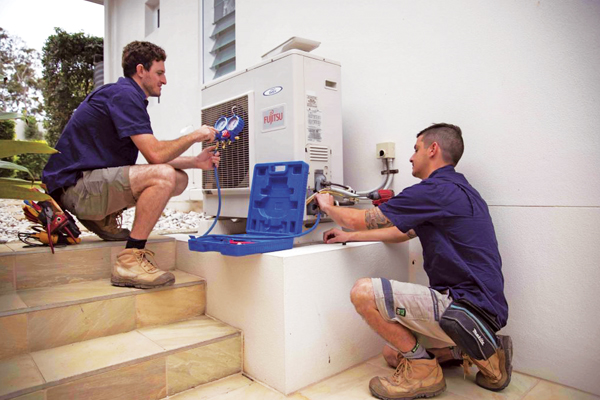How the AS/NZS 5141 Standard benefits air conditioning installers
Fujitsu General Australia national product manager Kyle Rafter looks at how the AS/NZS 5141 Standard benefits air conditioning installers.
On 26 November 2018, Standards Australia published a new standard for the air conditioning industry, reviewing the specification, design and installation process of air conditioning systems within residential buildings.
The Standard, AS/NZS 5141 Residential heating and cooling systems – Minimum applications and requirements for energy efficiency, performance and comfort criteria, has been created with a combined effort of industry representatives, consumer advocates, regulators and technical experts. The objective of the revisions is to improve the efficiency of systems after installation, which will assist manufacturer’s energy efficiency retention after installation.
The Standard is the first in Australia focusing on the heat mode, zoning, configuration and installation of an air conditioning system.
ADVERTISEMENT
Why this standard?
While there is regulation in the industry around minimum energy performance standards (MEPS) and star ratings, providing manufacturers with energy efficiency standards they need to comply to, there is little in place regarding design and installation, to ensure the energy efficiency claims of a system are actually achievable within a residential setting.
AS/NZS 5141 puts in place industry standards for design and installation, eliminating the risk of customers being provided with false information or incorrect air conditioning systems for their particular needs.
However, it doesn’t just help a customer, it is also designed to assist the installer. The new Standard aims to improve the quality of workmanship carried out and assist with improving an installer’s experience and level of expertise within the air conditioning industry.
It is the installer’s responsibility to ensure the correct design, selection, installation, commissioning and maintenance of a residential air conditioning system has taken place before handing over to a customer.
What is required from an installer?
A customer should be provided with a heat load assessment at the residential property, allowing installers to ensure the correct air conditioning system is specified for the type, size and layout of the property.
Heat load assessments are an essential part of the installation process. A customer could initially present incorrect information about their property including room size or building positioning, leading to an incorrect system design. This will impact how the air conditioning system performs and its energy efficiency. In isolation, or in combination, incorrect design and poor installation will impact a manufacturer’s energy efficiency claims.
While the guidelines are already common practice, until now the level of standard at which the work has been carried out has not been regulated. From an industry perspective it will encourage better workmanship and a greater customer/installer experience. For manufacturers, the new Standard will deliver a better process from design, selection, installation and commissioning. This will lead to optimum efficiency of the air conditioning system and greater consumer satisfaction.
What if standards aren’t followed?
An air conditioning system should be performing at its best, when it’s needed the most. If a customer feels the air conditioning unit isn’t providing ultimate comfort and efficiency, they can seek guidance online and compare manufacturer claims with real world figures.
There could be a number of factors as to why manufacturer claims aren’t being met; however, it’s in the installer’s best interest to complete all necessary requirements to the new Standard so any investigations taking place by the local regulatory authority e.g. Energy Safe Victoria in Victoria, or the manufacturer, doesn’t find fault with the installation.
Kyle Rafter has more than 10 years’ experience as an air conditioning and refrigeration technician. In 2015 he joined Fujitsu General Australia as a commercial business development manager, and is currently national product manager overseeing product development, compliance and training.
-
ADVERTISEMENT
-
ADVERTISEMENT


